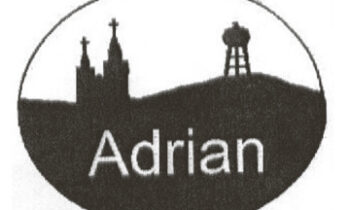What is a Blizzard? The National Weather Service defines a blizzard when the following conditions are met for at least three hours: sustained winds or frequent gusts to at least 35 mph and considerable falling and/or blowing snow that frequently reduces visibility to less than a quarter-mile. The National Weather Service does not name winter storms because a winter storm’s impact can vary from one location to another, and storms can weaken and redevelop, making it difficult to define where one ends and another begins. In November 2012, The Weather Channel began systematically naming winter storms. It would only name those storms that are “disruptive” to people. TWC’s decision was met with criticism from other weather forecasters.
As early as Friday, January 19, watches were being posted for areas of the midwest due to a low pressure system coming in from the southwest due to collide with warmer weather and moisture pushing up from the Gulf. Conditions stayed above normal for our area even through most of Sunday. Winter storm warnings and blizzard warnings were being posted by Sunday afternoon. Depending on the path of the storm, upwards of fourteen inches were being predicted for some areas of Nebraska, Iowa and Minnesota.
As the winter storm “Jaxon” (so named by The Weather Channel) pushed east Monday, blizzard warnings continued in effect from eastern Nebraska into northwest Iowa, far southeastern South Dakota and southwestern/south-central Minnesota. Those blizzard warnings included Hastings, NE; Sioux City, IA; and Mankato, MN. Winter storm warnings and winter weather advisories also extended from the upper Midwest to the northern Great Lakes and northern New England. Minneapolis/St. Paul was among the locations under winter storm warnings for Jaxon.
Significant reductions in visibility from blowing and drifting snow created dangerous driving conditions in the areas affected by “Jaxon.” The blizzard warnings included sections of Interstate 80, Interstate 90 and Interstate 29. Dangerous travel conditions prompted a closure of Interstate 29 in southeast South Dakota early Monday, from the Iowa state line to near Sioux Falls. Interstate 90, although travel was not advised, remained open throughout the storm. In Dickinson County, IA, and Platte County, NE, visibility declined so much that snow plows were pulled off the roads Monday morning, according to the Weather Channel. Near Rushmore, MN, visibility was down to less than one quarter a mile, and snow was drifting on the roads.
In town driving also proved to be hazardous due to white-out conditions. It was hard to see where the plows had been and the snow was deep where they hadn’t plowed. City crews were trying to keep the streets open, but the snow and blowing snow piled up in front anything that blocked it’s path. Twenty-five to thirty-five mile an hour winds hindered all progress of snow removal. Many local businesses and schools remained closed on Monday. All sports were postponed and people were encouraged to stay home.
During these type of conditions motorists need to stay tuned to updated forecasts and be prepared for potential difficult driving conditions. Remember to check road conditions at www.511mn.orgbefore leaving. Have a snow survival kit in your vehicle and stay with your vehicle if something does happen.
Be patient and remember snowplows work to improve road conditions. Stay back at least ten car lengths behind the plow. Stay alert for snowplows that turn or exit often with little warning. Slow down to a safe speed for the current conditions.
“Jaxon” continued to track to the east, and pushed out of the area by early Tuesday. It left behind about 6.5 to 12 inches of snow according to the National Weather Service. It was forcasted to be partially sunny by Wednesday afternoon. The rest of the week looks dry. We will need some nice days to dig out of this snow.






